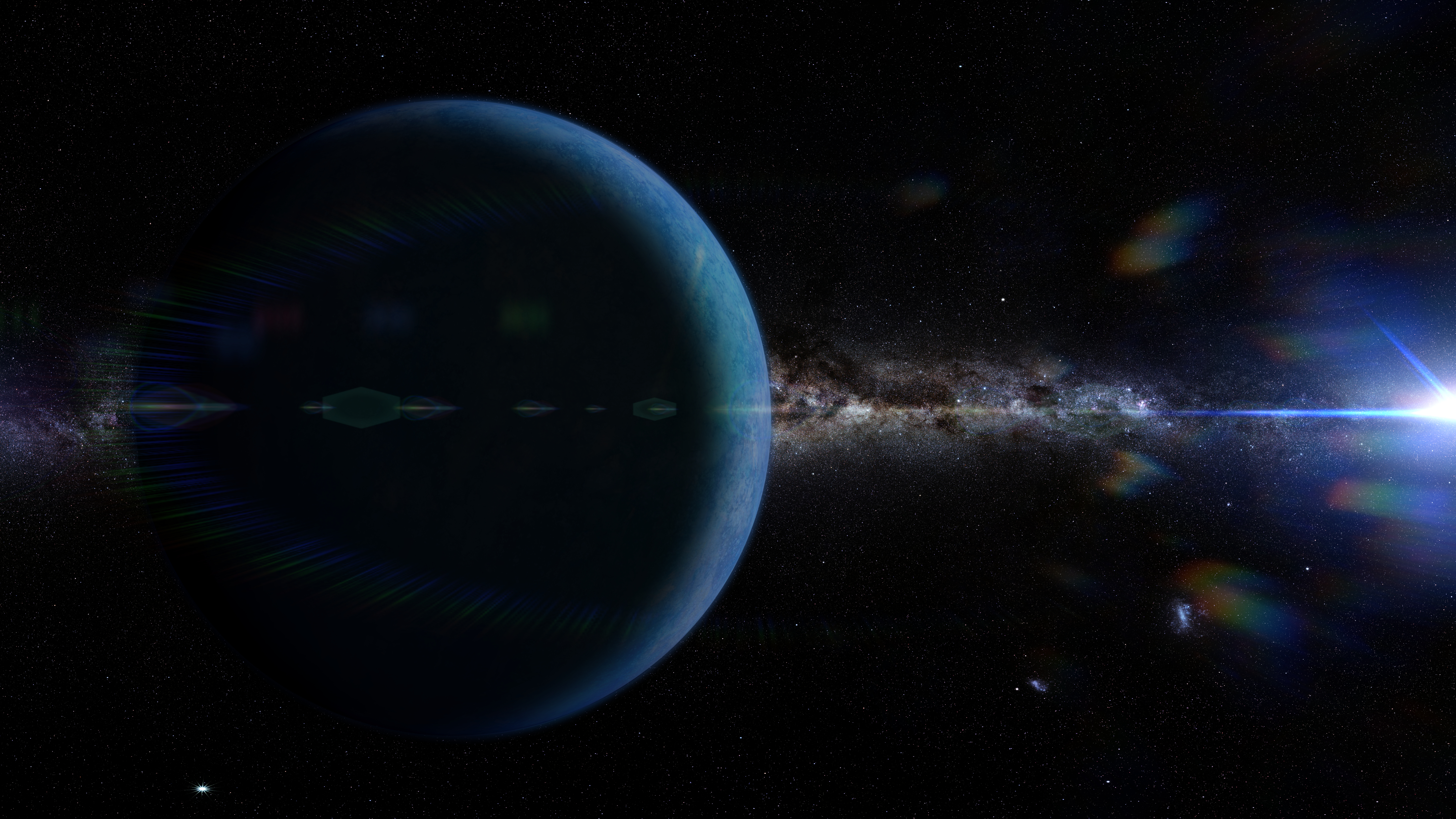Astronomers on the hunt for a ninth planet in our solar system have identified a “promising” candidate located well past Neptune, as per a new preprint study.
This could be the first indication of the much-speculated Planet Nine, which, if it exists, would be a massive, yet-to-be-discovered planet orbiting our sun at a great distance. Nonetheless, the notion of a ninth planet remains a topic of debate, and these latest findings are unlikely to settle that discussion.
The researchers found this new planetary candidate by analyzing previous satellite data. Currently, the candidate exists as a curious dot in several infrared images. However, its movement aligns with what would be expected from a large, distant planet.
“I was thrilled,” said Terry Phan, the study’s lead author and an astronomy PhD student at National Tsing Hua University in Taiwan, in an interview with Science while reflecting on the discovery. “It has driven us significantly.”
Phan and his team made their findings public on the preprint server arXiv on April 24, and their work has been accepted for publication in the journal Publications of the Astronomical Society of Australia. However, the findings have faced some skepticism.
Mike Brown, an astronomer from Caltech who co-proposed the Planet Nine theory in 2016, is not convinced that the infrared dots represent the elusive planet. Although he did not participate in this study, he calculated the orbit of the infrared signal and discovered that the object would be tilted about 120 degrees from the Solar System’s plane. This tilt is far greater than the expected tilt of Planet Nine, which is around 15 to 20 degrees, also indicating this object would be orbiting in a direction differing from the known planets, which roughly all lie on the same plane.
This discrepancy “doesn’t mean the planet isn’t out there, but it suggests this isn’t Planet Nine,” Brown told Science. “I doubt this planet would exert the influence on the Solar System that we believe we are observing.”
Related: How long would it take to reach Planet 9, if we find it?
Planet Nine’s anticipated location aims to explain the unusual orbits of certain objects in the Kuiper Belt, which lies at the far edges of our solar system. However, many researchers argue that the variations in these orbits may not necessarily be due to an undiscovered planet, and the scientific community is still awaiting direct observational proof of Planet Nine’s existence.
If Planet Nine truly exists, it is expected to be significantly larger than Earth, with an eccentric orbit billions of miles beyond Neptune, the eighth and currently last confirmed planet in our solar system. The estimated distance of Planet Nine’s orbit makes it challenging for scientists on Earth to detect, contributing to the difficulties in confirming or denying its existence.
The research team undertook an examination for Planet Nine candidates using data archives from two retired satellites: the 1983 Infrared Astronomical Satellite (IRAS) and the 2006-2011 AKARI satellite, as reported by Live Science’s sister site, Space.com. They sought distant objects that appeared to move slowly between data sets, which is characteristic of what Planet Nine would do if it were circling our sun.
After excluding known entities within the data, the researchers focused on a shortlist of potential candidates. They scrutinized images of these objects and eventually identified what they refer to as “one strong candidate.” This candidate is a dot with consistent color and brightness across the two data sets, indicating it’s a singular object captured by both satellites. The study suggests that follow-up observations are essential to fully understand its orbit.
Brown indicated to Science that if the infrared signal is indeed a planet, based on his calculations, it could not coexist with the originally hypothesized Planet Nine without destabilizing their orbits. This implies that the new candidate for Planet Nine could represent a different celestial body that might challenge the existing Planet Nine hypothesis.
The question of Planet Nine’s existence, or whether another undiscovered ninth planet resides in our solar system, is likely to remain controversial for now. Nevertheless, 2025 may mark a pivotal moment in this search.
The Vera C. Rubin Observatory, which is currently being built in Chile, is set to open later this year, potentially resolving the Planet Nine debate. This cutting-edge observatory will feature the world’s largest digital camera and aims to explore deeper into space than previous telescopes. Researchers hope it can locate Planet Nine within a year or two, if it is indeed out there.



